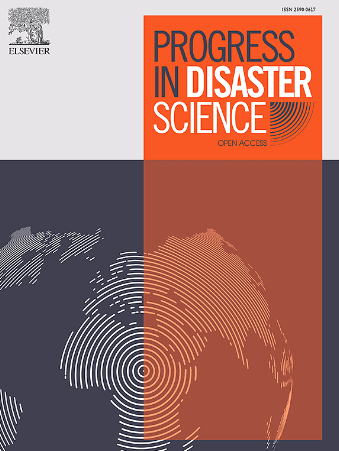Risk assessment and simulation optimization of evacuation in large public building fires: A case study
IF 3.8
Q3 ENVIRONMENTAL SCIENCES
引用次数: 0
Abstract
Fires in large public buildings cause substantial losses. Conducting reasonable evacuation risk assessments and simulation studies for early warning is essential. A comprehensive fire evacuation risk assessment model is proposed, consisting of a fire evacuation risk assessment framework based on Pythagorean fuzzy sets(PFS) and fuzzy comprehensive evaluation(FCE) and fire evacuation simulations. The fire evacuation risk assessment is conducted using PFS and FCE. Simulations with BIM, Pyrosim, and Pathfinder validate the results through dynamic safety analysis. This innovative approach enhances the dynamic safety analysis of evacuations. Additionally, the study improves the integration between Pyrosim and Pathfinder software, providing more accurate and reliable simulation results. Taking a cafeteria for primary and secondary school students as an example, the results indicate that the fire evacuation risk level of the student cafeteria is “moderately high risk.” Visibility is found to be the most critical factor affecting available safe evacuation time, compared to CO concentration, smoke layer height, and temperature. Not all cafeteria occupants could evacuate within the preset time, and significant congestion was observed. Thus, the assessment results are deemed reliable. Based on these results, targeted fire safety evacuation control strategies are proposed to enhance the efficiency and safety of evacuations in similar venues.
大型公共建筑火灾疏散风险评估与模拟优化:一个案例研究
大型公共建筑的火灾造成巨大损失。进行合理的疏散风险评估和预警模拟研究至关重要。提出了基于毕达哥拉斯模糊集(PFS)和模糊综合评价(FCE)的火灾疏散风险综合评估框架和火灾疏散模拟的火灾疏散风险综合评估模型。采用PFS和FCE进行火灾疏散风险评估。使用BIM、Pyrosim和Pathfinder进行模拟,通过动态安全分析验证结果。这种创新的方法增强了疏散的动态安全分析。此外,该研究还改进了Pyrosim与Pathfinder软件的集成,提供了更准确可靠的仿真结果。以某中小学生食堂为例,结果表明该学生食堂的火灾疏散风险等级为“中等高风险”。与CO浓度、烟雾层高度和温度相比,能见度是影响可用安全疏散时间的最关键因素。并不是所有的食堂居民都能在预定的时间内撤离,并且观察到严重的拥堵。因此,评估结果被认为是可靠的。在此基础上,提出了针对性的消防安全疏散控制策略,以提高类似场所的疏散效率和安全性。
本文章由计算机程序翻译,如有差异,请以英文原文为准。
求助全文
约1分钟内获得全文
求助全文
来源期刊

Progress in Disaster Science
Social Sciences-Safety Research
CiteScore
14.60
自引率
3.20%
发文量
51
审稿时长
12 weeks
期刊介绍:
Progress in Disaster Science is a Gold Open Access journal focusing on integrating research and policy in disaster research, and publishes original research papers and invited viewpoint articles on disaster risk reduction; response; emergency management and recovery.
A key part of the Journal's Publication output will see key experts invited to assess and comment on the current trends in disaster research, as well as highlight key papers.
 求助内容:
求助内容: 应助结果提醒方式:
应助结果提醒方式:


